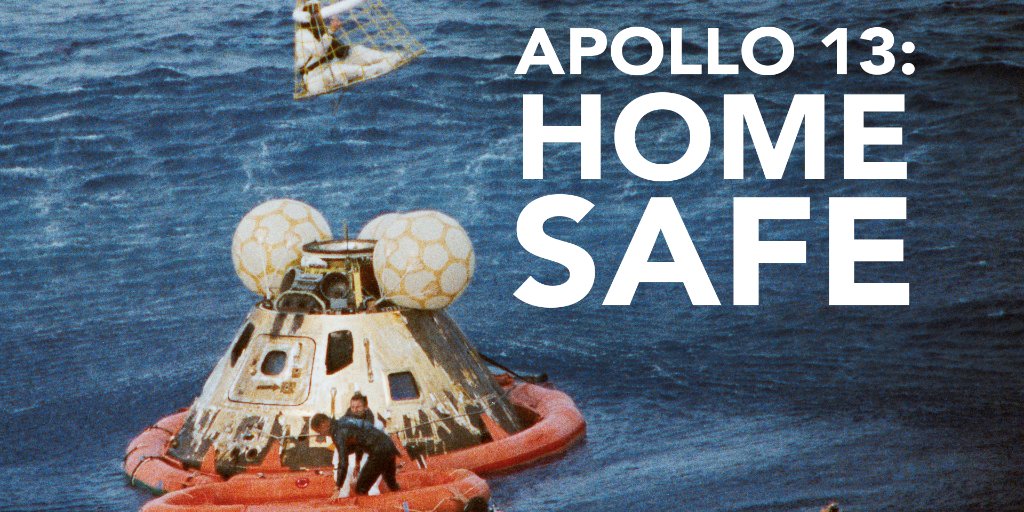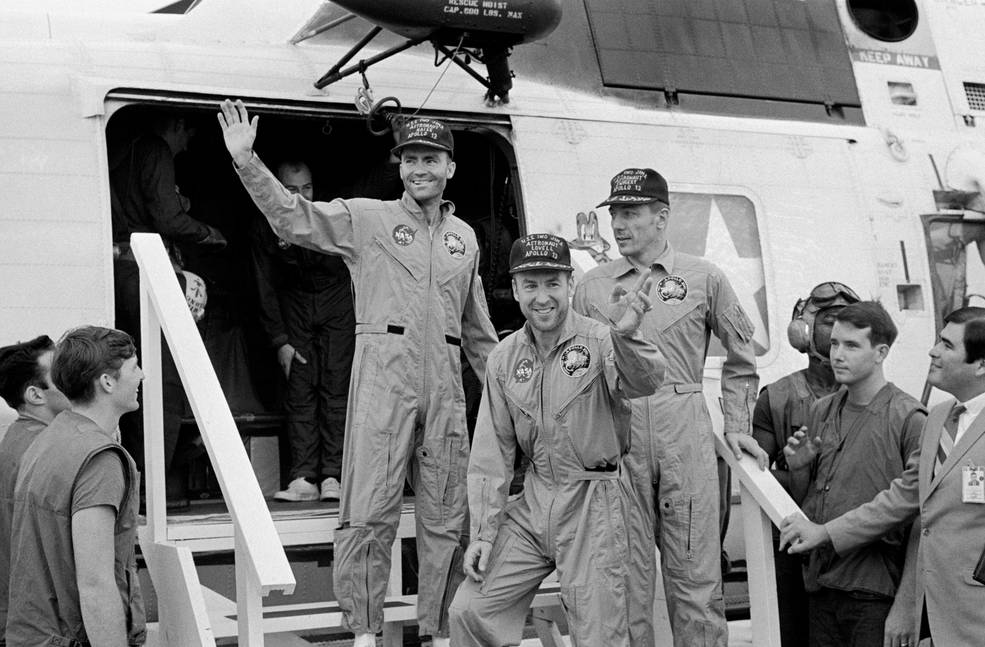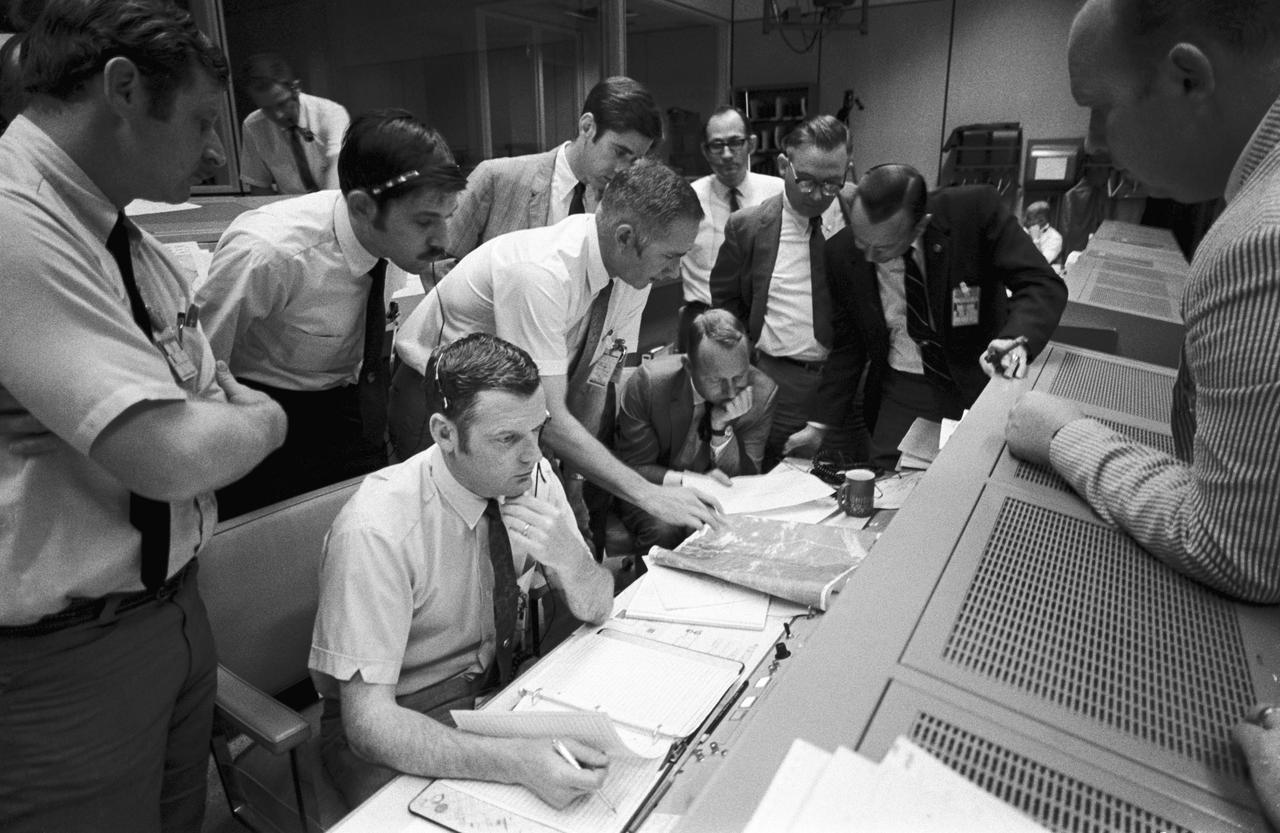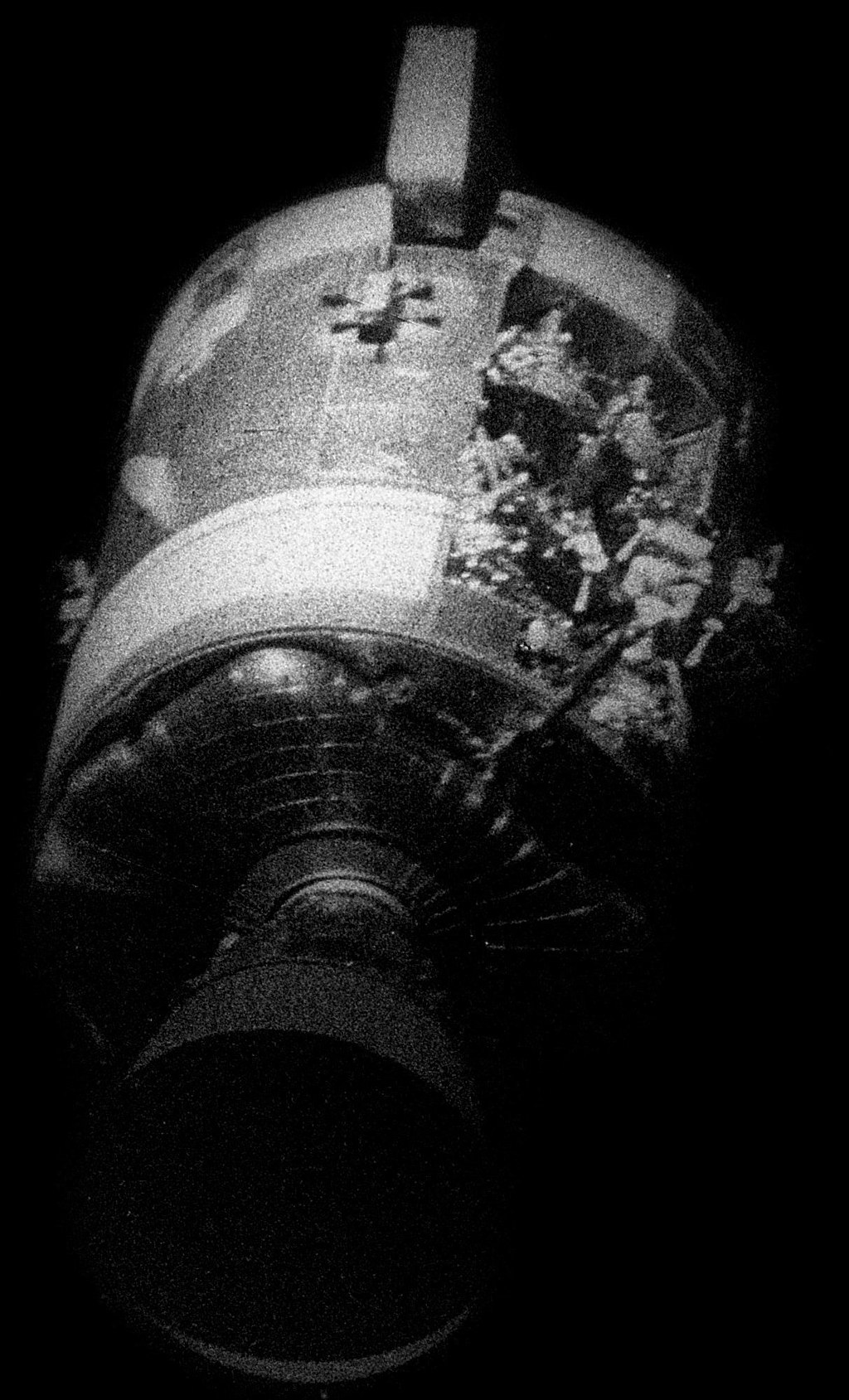
For SpaceUpClose.com & RocketSTEM
CAPE CANAVERAL, FL – Apollo 13, NASA’ 3rd planned manned lunar landing mission launched 50 years ago on Apollo 11, 1970 suffered a catastrophic explosion enroute to the Moon and has since become known as “a successful failure” because the three man crew of NASA astronauts was able to safely return in spite of the explosion thanks to the round the clock heroic efforts of the entire NASA team to devise a solution to save the trio – that riveted the world
NASA has just released a new documentary entitled ‘Apollo 13: Home safe’ explaining how based on interviews with the two surviving Apollo 13 Astronauts Jim Lovell and Fred Haise, as well as Flight Directors Gene Kranz and Glynn Lunney, with engineer Hank Rotter, and many others.
The Apollo 13 crew comprised commanded Commander James (Jim) Lovell Jr., Command Module Pilot John Swigert Jr. and Lunar Module Pilot Fred Haise Jr.
Swigert was a late replacement for Ken Mattingly, who was grounded after exposure to rubella a week before launch

Their Saturn V rocket launched at 2:13 p.m. EST on April 11,1970, from Launch Pad 39A at NASA’s Kennedy Space Center in Florida. The command module was named Odyssey, and the lunar module was named Aquarius.
“Our goal 50 years ago was to save our valiant crew after sending them around the Moon and return them safely to Earth,” said NASA Administrator Jim Bridenstine.
“Our goal now is to return to the Moon to stay, in a sustainable way. We are working hard to ensure that we don’t need to respond to this kind of emergency in Artemis, but to be ready to respond to any problems we don’t anticipate.”
“As we mark the 50th anniversary of our Apollo 13 mission, we’re sharing memories, recognizing the triumph of the mission control team and the astronauts, and looking at how those lessons learned can be applied to our lunar Artemis program. Apollo 13 has become known as “a successful failure” that saw a safe return of the crew in spite of a catastrophic explosion. (The photo at left shows part of the damaged service module.)” according to a NASA description.
Watch the NASA documentary “Apollo 13: Home Safe” to find out how.
Video Caption: “Houston, we’ve had a problem.” Apollo 13 has become known as “a successful failure” that saw a safe return of the crew in spite of a catastrophic explosion in the middle of their lunar journey. This 30-minute documentary features interviews with Apollo 13 Astronauts Jim Lovell and Fred Haise, as well as Flight Directors Gene Kranz and Glynn Lunney, with engineer Hank Rotter. Parts of their interviews take place in the restored Apollo mission control room. This documentary also features original NASA footage and newly synchronized audio from Mission Control. Thanks to Stephen Slater and Ben Feist/Apollo in Real-Time (apolloinrealtime.org/13) for providing additional footage and audio.
Apollo 13 was the seventh crewed mission in the Apollo space program

Credits: NASA

Watch Ken’s continuing reports onsite for live reporting of upcoming and recent ULA and SpaceX launches including Boeing Starliner, Crew and Cargo Dragon, Solar Orbiter, In-Flight Abort and Starlink at the Kennedy Space Center and Cape Canaveral Air Force Station.
Stay tuned here for Ken’s continuing Earth and Planetary science and human spaceflight news: www.kenkremer.com –www.spaceupclose.com – twitter @ken_kremer – email: ken at kenkremer.com
Dr. Kremer is a research scientist and journalist based in the KSC area, active in outreach and interviewed regularly on TV and radio about space topics.
………….
Ken’s photos are for sale and he is available for lectures and outreach events




